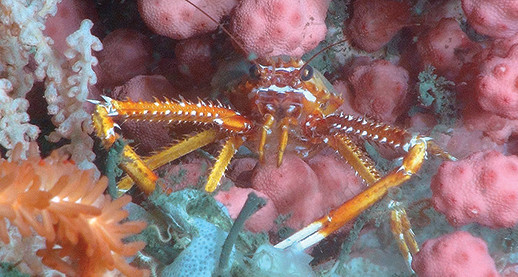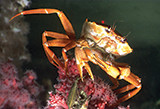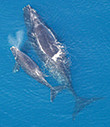|
October 2015 • Volume 14, Number 3

Photograph, NOAA-OER/BOEM/USGS
|
Jeffrey Brainard
Maryland's coastal ocean zone is home to a hidden world of marine life and ocean geography. Deep below the water's surface, pink bubblegum coral grows 10 feet high. Only about 60 miles east of Ocean City sits the head of Baltimore Canyon, a large underwater gorge, and dozens more of these canyons lie along the continental shelf edge of the Mid-Atlantic region. Until recently, this dark, remote region was only barely explored. But over the past several years — using new technologies such as remotely operated underwater vehicles — scientists have learned more about the biological and geological wonders in this watery world. The research has uncovered a rich and fragile ecosystem, and it has led to new policy decisions aimed at protecting these natural resources from human disturbances. Inevitably the new findings have raised new questions. more . . .
|

The blue crab ( Callinectes sapidus) gets the spotlight among Maryland crustaceans, but another kind of crab — a red one — is also caught commercially, off Maryland's ocean coast. The Atlantic deep-sea red crab ( Chaceon quinquedens) lives in submarine canyons and elsewhere on the ocean bottom. In recent studies, researchers have gained new information about this little-known species. They hope their findings will become useful to fisheries managers as ocean temperatures rise and harvest pressure increases. more . . .
|

Scientists are using underwater microphones to study dolphins and whales in an area off Maryland's coast where wind-power turbines may be built. By learning more about where these marine mammals live and travel, researchers hope to help inform decisions about how best to protect these animals from the effects of this construction. more . . .
|

Sarah Wilkins will work with partners to disseminate data about the Chesapeake Bay to help a variety of audiences understand and prepare for increased coastal flooding and other effects of changing climate. more . . .
|
|